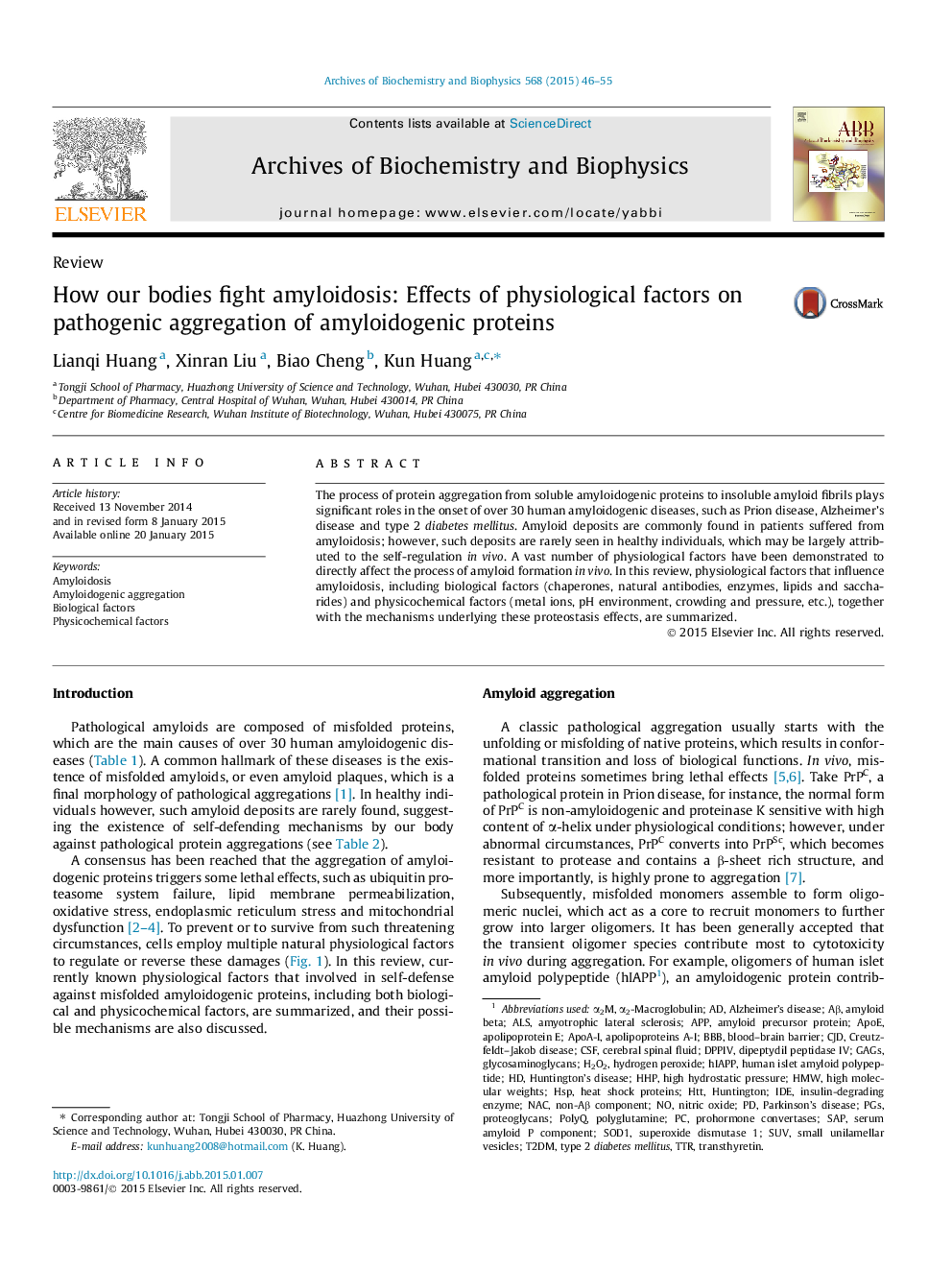| Article ID | Journal | Published Year | Pages | File Type |
|---|---|---|---|---|
| 1925006 | Archives of Biochemistry and Biophysics | 2015 | 10 Pages |
•Amyloid aggregation plays critical roles in over 30 amyloidogenic diseases.•Physiological regulations against amyloid aggregations exist in vivo.•In vivo, multiple physiological factors directly affect amyloid aggregation.•Biological factors and physicochemical factors are involved in this self-defense.
The process of protein aggregation from soluble amyloidogenic proteins to insoluble amyloid fibrils plays significant roles in the onset of over 30 human amyloidogenic diseases, such as Prion disease, Alzheimer’s disease and type 2 diabetes mellitus. Amyloid deposits are commonly found in patients suffered from amyloidosis; however, such deposits are rarely seen in healthy individuals, which may be largely attributed to the self-regulation in vivo. A vast number of physiological factors have been demonstrated to directly affect the process of amyloid formation in vivo. In this review, physiological factors that influence amyloidosis, including biological factors (chaperones, natural antibodies, enzymes, lipids and saccharides) and physicochemical factors (metal ions, pH environment, crowding and pressure, etc.), together with the mechanisms underlying these proteostasis effects, are summarized.
